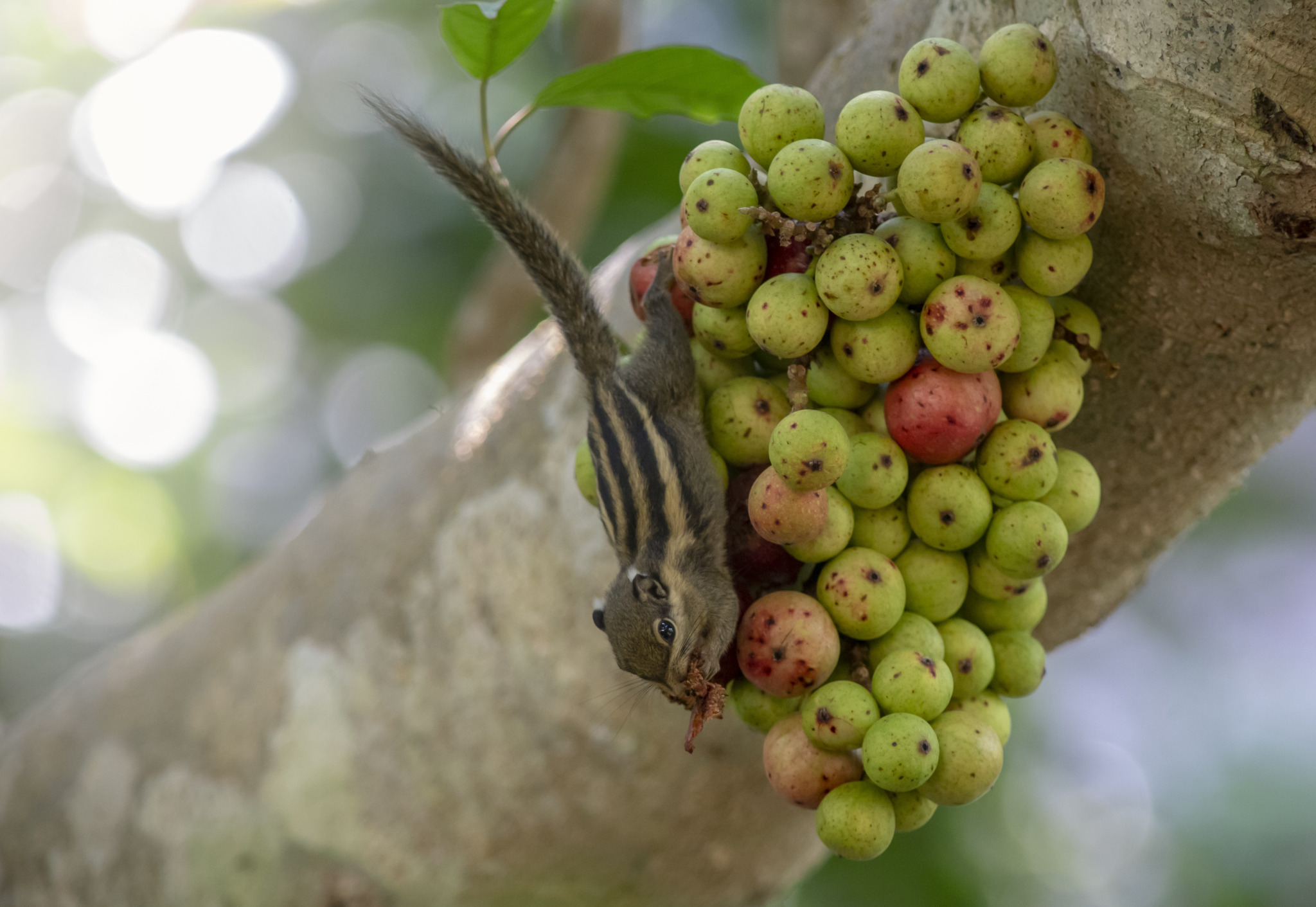Deep Overview: Himalayan Striped Squirrel (Tamiops mcclellandii)
The Himalayan striped squirrel (Tamiops mcclellandii) is a small, energetic rodent belonging to the Sciuridae family. It is known for its distinctive striped pattern, agile climbing abilities, and highly active nature. This species primarily inhabits forests of South and Southeast Asia, where it plays a vital role in seed dispersal and forest ecology.
Taxonomy & Classification
- Kingdom: Animalia
- Phylum: Chordata
- Class: Mammalia
- Order: Rodentia
- Family: Sciuridae
- Genus: Tamiops
- Species: Tamiops mcclellandii
- Common Names:
- Himalayan striped squirrel
- Burmese striped squirrel
- McClelland’s squirrel
Physical Description
- Size:
- Body length: 12–16 cm (4.7–6.3 in)
- Tail length: 10–14 cm (3.9–5.5 in)
- Weight: 50–90 g
- Coloration & Markings:
- Fur: Short, soft, and dense
- Back: Brownish-gray with four dark stripes running along its body, separated by lighter bands
- Belly: Yellowish-white or pale gray
- Tail: Bushy with a mix of brown and black hairs
- Eyes: Large and dark, adapted for good vision
- Body Adaptations:
- Sharp claws & agile limbs for climbing trees
- Long tail for balance when leaping between branches
- Small, pointed ears with tufts of fur
Distribution & Habitat
- Geographic Range:
- Found across South and Southeast Asia
- Countries: India, Nepal, Bhutan, China (Yunnan region), Myanmar, Thailand, Laos, Vietnam, Cambodia, Malaysia
- Preferred Habitat:
- Evergreen forests, montane forests, and mixed woodlands
- Found at elevations ranging from lowland forests to over 3,000 meters
- Prefers tree canopies and dense vegetation
Behavior & Lifestyle
- Diurnal (active during the day):
- Most active in early morning and late afternoon
- Spends time foraging, climbing, and socializing
- Arboreal (tree-dwelling):
- Agile climber, often seen leaping between branches
- Occasionally descends to the ground for food
- Social Structure:
- Typically lives solitarily or in small family groups
- Uses high-pitched vocalizations and tail movements to communicate
- Hibernation:
- Does not hibernate, remains active year-round
Diet & Foraging
- Omnivorous Diet:
- Primarily frugivorous and granivorous (eats fruits and seeds)
- Also consumes nuts, flowers, buds, leaves, insects, and small invertebrates
- Foraging Behavior:
- Stores food in tree crevices or burrows
- Plays a crucial role in seed dispersal, helping with forest regeneration
Reproduction & Life Cycle
- Breeding Season:
- Varies depending on location, but often peaks in spring and summer
- Gestation Period:
- About 40 days
- Litter Size:
- Typically 2–4 pups per litter
- Parental Care:
- Mothers nurse and protect young in tree hollows or nests
- Young squirrels become independent within a few months
Predators & Threats
- Natural Predators:
- Birds of prey (eagles, hawks, owls)
- Snakes
- Carnivorous mammals (civets, martens, wild cats)
- Threats from Humans:
- Deforestation & habitat loss due to logging and agriculture
- Illegal pet trade in some areas
- Climate change affecting forest ecosystems
- Conservation Status:
- Listed as “Least Concern” (LC) by the IUCN, but habitat destruction remains a threat
Ecological Importance
- Seed Dispersal:
- Helps forests regenerate by spreading seeds
- Pest Control:
- Eats insects that could become agricultural pests
- Prey for Predators:
- A key part of the food web
Relationship with Humans
- Harmless to Humans:
- Not aggressive and avoids human contact
- Occasionally Seen in Gardens & Parks:
- Sometimes enters orchards and farms for food
- Not Domesticated:
- Although sometimes kept as a pet, it is not suited for captivity
Fun Facts
- One of the smallest tree squirrels in Asia
- Moves extremely fast, making it hard to spot in the wild
- Uses whistling and clicking sounds to communicate danger
- Despite being a tree-dweller, it can jump long distances on the ground
Conclusion
The Tamiops mcclellandii is a remarkable small, agile squirrel that thrives in the forests of South and Southeast Asia. Its striped fur, quick movements, and role in maintaining forest ecosystems make it an essential part of nature. While it faces threats from habitat loss, it remains widespread and adaptable.
Views: 1370
Subscribe to the newsletter:
